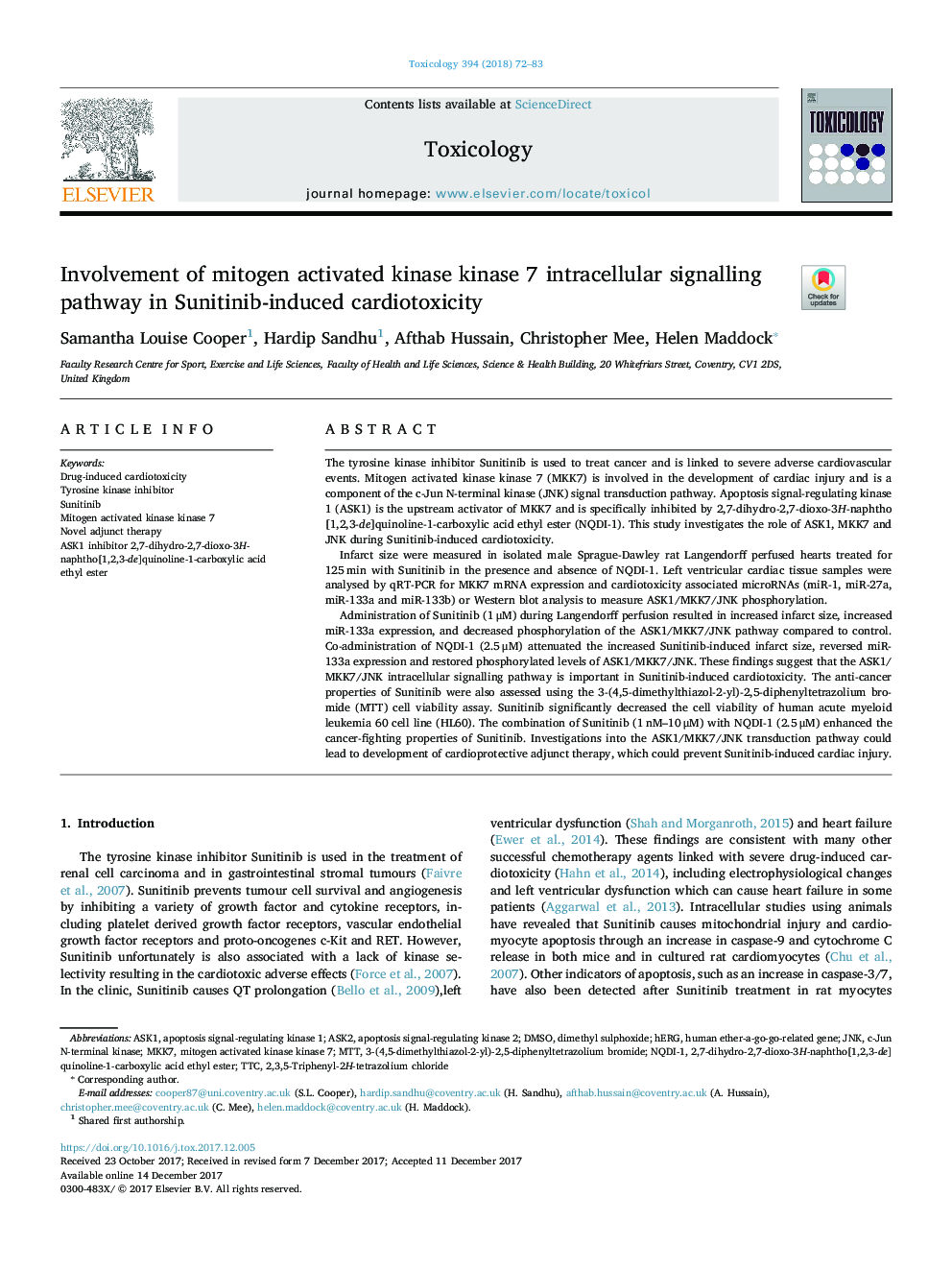| Article ID | Journal | Published Year | Pages | File Type |
|---|---|---|---|---|
| 8552871 | Toxicology | 2018 | 12 Pages |
Abstract
Administration of Sunitinib (1â¯Î¼M) during Langendorff perfusion resulted in increased infarct size, increased miR-133a expression, and decreased phosphorylation of the ASK1/MKK7/JNK pathway compared to control. Co-administration of NQDI-1 (2.5â¯Î¼M) attenuated the increased Sunitinib-induced infarct size, reversed miR-133a expression and restored phosphorylated levels of ASK1/MKK7/JNK. These findings suggest that the ASK1/MKK7/JNK intracellular signalling pathway is important in Sunitinib-induced cardiotoxicity. The anti-cancer properties of Sunitinib were also assessed using the 3-(4,5-dimethylthiazol-2-yl)-2,5-diphenyltetrazolium bromide (MTT) cell viability assay. Sunitinib significantly decreased the cell viability of human acute myeloid leukemia 60 cell line (HL60). The combination of Sunitinib (1â¯nM-10â¯Î¼M) with NQDI-1 (2.5â¯Î¼M) enhanced the cancer-fighting properties of Sunitinib. Investigations into the ASK1/MKK7/JNK transduction pathway could lead to development of cardioprotective adjunct therapy, which could prevent Sunitinib-induced cardiac injury.
Keywords
Related Topics
Life Sciences
Environmental Science
Health, Toxicology and Mutagenesis
Authors
Samantha Louise Cooper, Hardip Sandhu, Afthab Hussain, Christopher Mee, Helen Maddock,
